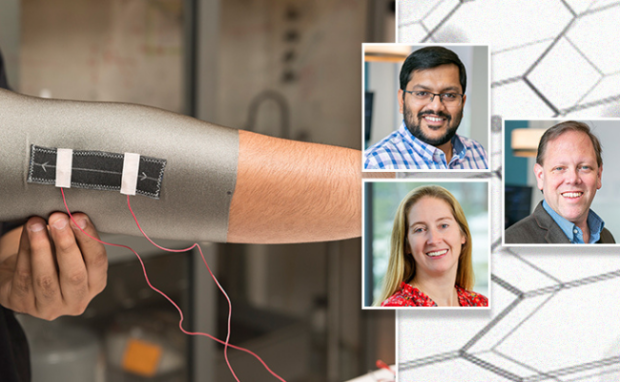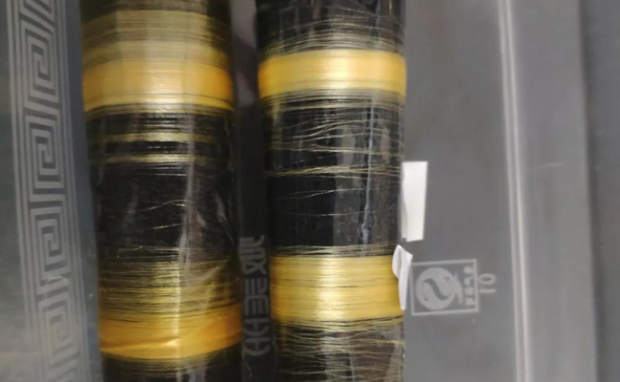Wearable nanotech boosts injury recovery
University of Delaware researchers created nanomaterial-based sensors that facilitate healthcare and fitness. Experts can embed Henswear into new apparel or ones already owned while remaining thin and flexible. Then, it could monitor a patient’s muscle movements to ensure they are following therapy. Conversely, Henswear could help athletes maintain fitness.
Technology enables us to streamline healthcare and exercise with smartwatches and mobile apps. Soon, Henswear could take that trend to the next level by monitoring our bodies closer through our garments. It might help you meet your fitness goals more easily and facilitate an injured person’s recovery more quickly.
This article will discuss how this wearable nanotech functions. Later, I will cover other clothing innovations, such as enhanced spider silk, which is tougher than Kevlar!
How does the wearable nanotech work?

Henswear sensors can integrate seamlessly into regular fabrics to provide real-time kinetic and kinematic data previously available via lab equipment. Moreover, they boast remarkable flexibility and pressure sensitivity.
While working on carbon nanotube-based sensors, Professor Erik Thostenson and his team developed these sensors 15 years ago. In 2019, he collaborated with Sagar Doshi, an associate at UD’s Center for Composite Materials (CCM).
They worked with Jil Higginson, a mechanical and biomedical engineering professor and the director of UD’s Institute for Engineering Driven Health (EDH). They collaborated on a Delaware INBRE-funded pilot study to evaluate the ability of Thostenson’s nanomaterial-based sensors to collect human movement data.
Soon, they will conduct additional research to validate Henswear and compare them to conventional lab-based assessments. “This research will be more focused on exercise and range of motion, which is data that can help clinicians track whether a patient is compliant with their therapy,” said Dr. Higginson.
You may also like: Wearable tech helps beat the heat
“But in order for that to work, the processing of the materials needs to be perfected and done at scale — so we know that we can wash these textiles and they will still work, for example. So, we’ll also have ongoing investigations into the material properties thanks to this grant.”
The University of Delaware said the wearable nanotech could help athletes maintain their bodies. The sensors would ensure they follow proper form and posture during exercise. More importantly, the technology could facilitate recovery for injured people by helping them follow their rehabilitation therapies properly.
Nowadays, they will work with UD’s Office of Economic Innovation and Partnerships (OEIP) and an industry mentor to find the best market and application for this tech. “We understand the sensor and the sensing mechanism, and now we will be working on translating it to an application,” Thostenson said.
Other wearable innovations

Chinese scientists made another fabric breakthrough by combining spider and silkworm silk that is stronger than bulletproof vests! It is the first time scientists have merged the benefits of silkworm and spider threads after years of research.
Both materials have opposing perks and flaws. People have been unwinding silkworm cocoons for fabrics, but they break easily.
Conversely, spider silk is flexible, durable, and strong, but arachnids are hard to cultivate. Keep 100 spiders in a confined space, and they will eventually attack one another until you only have a couple left.
Meanwhile, 100 silkworms will peacefully coexist in a factory. That is why scientists wanted to make worms produce spider silk. Fortunately, Mi’s team succeeded in this endeavor.
The scientists extracted MiSp from the Araneus ventricosus, an orb-weaving East Asian spider. Then, they used CRISPR to insert the MiSp spider silk proteins and replace the silkworm’s similar gene.
As a result, the transgenic silkworms produced high-strength fibers, measuring the stress a material can withstand without deforming. Moreover, they have high toughness, which estimates how much energy they can absorb through stretching before rupturing.
You may also like: AI eye test detects brain injuries in minutes
Justin Jones, a biologist who engineers spider silks at Utah State University, told Science.org it was surprising that MiSp-based threads were flexible. The protein usually produces strong fibers, not flexible ones.
“But it does make a flexible fiber when you put it in a silkworm,” he added. The website says Mi and his colleagues must cross-breed their experimental silkworms with commercial strains to mass produce this special spider silk fiber.
Mi also plans to make the research-grade fiber stronger and stretchier. He plans on designing silk proteins that incorporate non-natural amino acids to add new properties to the fiber.
Conclusion
University of Delaware scientists created wearable nanotech that people can embed into clothing. Also, Henswear is thin enough to maintain comfort.
Still, it boasts sensitivity and flexibility that lets it collect data previously only available from lab equipment. Henswear has promising fitness and healthcare applications.
The researchers are working with their partners to realize these functions. Learn more about the latest digital tips and trends at Inquirer Tech.